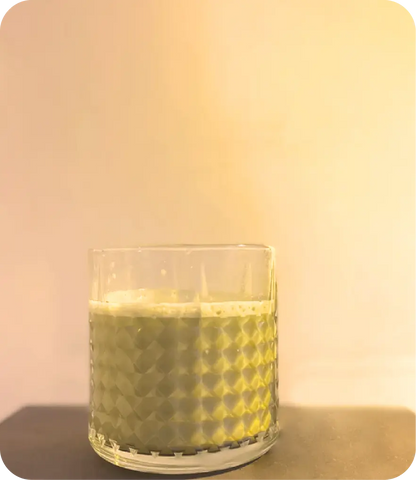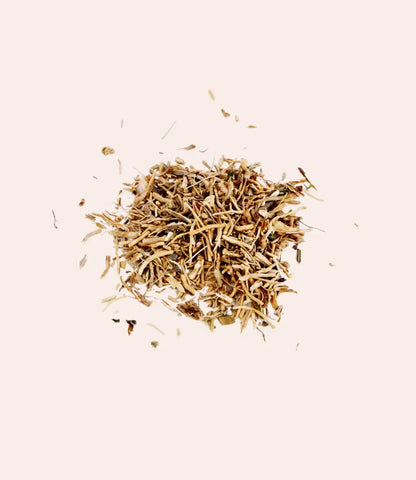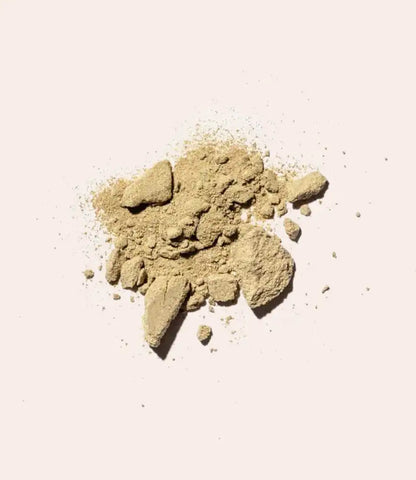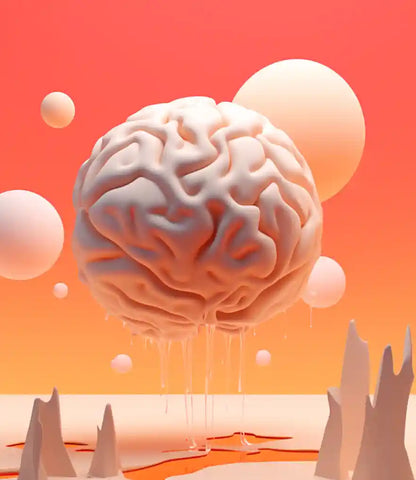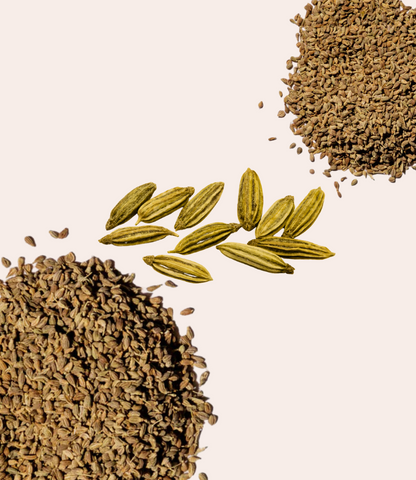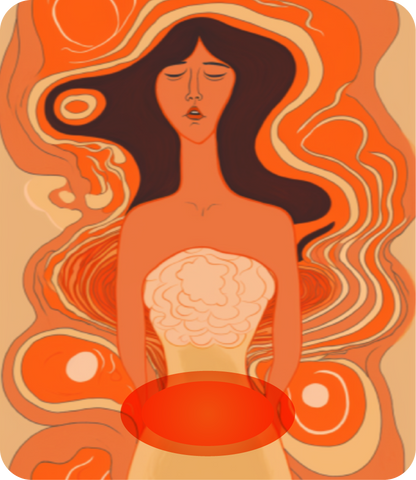The Science behind PMS
One particular topic that often captivates curiosity is Premenstrual Syndrome or PMS (PMS). This natural and cyclical phenomenon affects millions of people worldwide, prompting a wide range of emotional, physical, and psychological changes.
By going into the science behind PMS, we can enhance our understanding of its underlying mechanisms and empower everyone with the knowledge necessary to navigate this aspect of reproductive health with empathy and awareness.
Related to: PMS Myths 101
Premenstrual syndrome is a collection of symptoms that typically affect people in the days leading up to their menstrual period. Among the most common ailments are generalized bloating, appetite changes, breast tenderness, mood swings, nausea, headaches, and fatigue.
It is estimated that up to 1 in 2, people experience some form of PMS during their reproductive years. However, the exact cause of PMS is not yet fully understood. The most scientifically supported theory is based on hormonal changes caused by fluctuations in estrogen and progesterone levels.
Research suggests that menstruating people that suffer from PMS may have both higher estrogen levels relative to progesterone and increased brain receptor sensitivity.
Although PMS can be uncomfortable, it is generally not a cause for concern but does serve as an indicator that something is off with your cycle. However, some may experience more severe symptoms that interfere with their daily lives. When this occurs, PMS becomes Premenstrual Dysphoric Disorder (PMDD). Regardless of whether you experience PMS or PMDD, this is not a condition that needs to be accepted, and every time more and more research is showing that there are things you can proactively do to start preventing its occurrence.
PMS at Different Ages
PMS can affect people of all ages who menstruate, but the severity and type of symptoms may vary depending on age.
During adolescence, PMS can manifest in various ways, some common experiences include physical discomfort, mood changes, and behavioral alterations. Let's explore these symptoms in more detail:
Physical Symptoms include abdominal bloating and cramps that could be caused by hormonal fluctuations, also headaches or migraines may be triggered during the premenstrual phase by the same cause.
Mood changes such as irritability, mood swings, low-stress tolerance, or even anxiety and depression could affect young people during the premenstrual phase.
The most common behavioral alterations are fatigue and sleep disturbances such as excessive sleepiness or insomnia, along with changes in appetite as increased food cravings for specific foods, particularly those high in sugar or carbohydrates.
As women approach their 30s and 40s, PMS symptoms can become more severe.
Accompanied by night sweats and breast tenderness, PMS gradually distorts mood, becoming a problem that affects people that suffer from it in day-to-day life. This occurrence is not isolated; as it serves as an indicator of hormonal shifts that occur during perimenopause.
Related to: Headaches and Periods: Is there a connection?
PMS, a Multifactorial Condition
While the exact source of PMS is not known, research indicates that it emerges from the interaction of various factors.
- Hormonal Fluctuations: PMS is thought to be primarily influenced by hormonal changes that occur during the menstrual cycle. The levels of estrogen and progesterone fluctuate throughout the cycle, and it is believed that an imbalance or sensitivity to these hormones may contribute to PMS symptoms.
- Serotonin Levels: Serotonin is a neurotransmitter that plays a role in regulating mood. Some studies suggest that women with PMS may have lower levels of serotonin during the premenstrual phase, which can lead to mood swings, irritability, and depression.
- Nutritional Deficiencies: Certain nutrient deficiencies have been associated with an increased risk of PMS or worsening of symptoms. For example, low levels of magnesium, vitamin B6, and essential fatty acids (omega-3 fatty acids) may contribute to PMS symptoms. These nutrients are involved in various physiological processes, including hormone regulation and neurotransmitter synthesis.
- Neurotransmitter Imbalance: Changes in neurotransmitter activity, such as increased sensitivity to the hormone prolactin or altered gamma-aminobutyric acid (GABA) levels, have been linked to PMS symptoms. These imbalances can affect mood, sleep, and pain perception.
- Inflammation: Inflammation may play a role in the development of PMS symptoms. Elevated levels of certain inflammatory markers, such as C-reactive protein (CRP), have been observed in women with PMS. Inflammation can affect hormone metabolism and contribute to pain and discomfort.
Understanding Your Own PMS
We know a lot and yet very little about PMS. The only certain thing is that it is a multifactorial condition whose severity may depend on factors such as race, diet, genetic factors, and the level of stress experienced. Therefore, the treatment will also depend on your menstrual history. Whether you consult with your OBGYN or a functional healthcare provider, the following are key action items that can be taken to help relieve and even resolve PMS:
- Dietary Modifications: Emphasizing a well-balanced diet that includes nutrient-rich foods and avoiding processed foods can help address potential deficiencies and hormonal alterations. We have also seen incredible results by aligning your diet with the specific needs of each phase. In this way, you can optimize your energy levels, manage symptoms more effectively, and promote hormonal balance throughout your menstrual cycle. If you want to take a deeper dive into this, we have created a free ebook that further provides concrete information on how to eat for your cycle.
- Herbal Remedies: Certain herbs, such as lemon balm, Schisandra berries, mugwort, and passionflower have been traditionally used to alleviate PMS symptoms and we have found them to be incredibly supportive. These herbs help modulate hormonal balance and reduce inflammation as well as stress.
- Lifestyle Changes: Exercising according to the phase of your cycle, stress management techniques (e.g., relaxation exercises, meditation), and adequate sleep can all contribute to symptom relief.
- Supplements: In some cases, supplements like magnesium, vitamin B6, and omega-3 fatty acids may be recommended to address specific nutrient deficiencies associated with PMS.
It's important to note that every individual is unique, and the effectiveness of different approaches for managing PMS may vary. Consulting with a qualified healthcare professional can help determine the most appropriate treatment plan based on individual needs and symptoms.
Related to: How Your Menstrual Cycle Affects Your Sleep
Sources
Gudipally PR, Sharma GK. Premenstrual Syndrome. [Updated 2022 Jul 18]. In: StatPearls [Internet]. Treasure Island (FL): StatPearls Publishing; 2023 Jan-. Available from: https://www.ncbi.nlm.nih.gov/books/NBK560698/
Bhuvaneswari K, Rabindran P, Bharadwaj B. Prevalence of premenstrual syndrome and its impact on quality of life among selected college students in Puducherry. Natl Med J India. 2019 Jan-Feb;32(1):17-19. doi: 10.4103/0970-258X.272109. PMID: 31823933.
Cheng SH, Shih CC, Yang YK, Chen KT, Chang YH, Yang YC. Factors associated with premenstrual syndrome - a survey of new female university students. Kaohsiung J Med Sci. 2013 Feb;29(2):100-5. doi: 10.1016/j.kjms.2012.08.017. Epub 2013 Jan 3. PMID: 23347812.
American College of Obstetricians and Gynecologists - Premenstrual Syndrome (PMS) https://www.acog.org/womens-health/faqs/premenstrual-syndrome










